Citrus fruits are among of the most nutritious foods for humans. Additional advantages are the popularity and widespread dissemination, as well as a pleasant, refreshing taste. The etymology of the word comes from the Latin Citron, which means a lemon. Citron, in turn is derived from the ancient Hellenic word cedar.
All types of citrus fruits come from evenly spaced evergreen trees, with slightly leathery leaves, their stem is often with extended wings. Almost all citruses have long or short spikes. White or pink-purple flowers come either alone, or many on a leaf axis. Their various types are difficult to classify, because there are many crosses and mutations.
Citrus fruits like light, heat and humid air. At temperatures below 10 ° C need to rise. Incorrectly, the group of citrus fruits is considered to include kiwis, bananas and pineapples - they are not citrus, while still being southern, tropical fruits.
The homeland of citrus fruits is considered to be Southeast Asia, bordered by Northeastern India, Myanmar (Burma) and the Chinese province of Yunnan. Shortly afterwards, citrus fruits are grown in Brazil, USA, China, India, Indonesia and Indo - China. Citrus trees are distributed throughout the tropics and subtropics of the entire planet.
The first references in literature to lemons are found in Theophrastus circa 300 BC. "Limung" is spoken of in ancient Chinese records, however, the homeland of the lemon is India. The word "limung", in Chinese, means "good for mothers". The word "orange", in turn, leads to the German language, which means "Chinese apple". It is for these special "Chinese apples" that the construction of special facilities started - greenhouses.
The biggest producers of citrus today are Brazil and Florida (USA). The volume of world trade in citrus fruit continues to grow, demand comes mainly from Indonesia and Vietnam. The main importers of citrus fruits in 2009 were Germany, France, Russia, UK and USA. Major suppliers are Turkey, South Africa, USA, China, Argentina.
37% of world imports belongs to oranges, 31% - mandarins, 21% - of lemons. Grapefruit and other citrus fruits occupy 9%.
India ranks fifth in the world by volume of annual production of citrus, but almost all of its production is for domestic consumption. India today is considered one of the largest producing countries, when it comes to lemons and limes. In 2008, the harvest of lemons in the country amounted to 2, 429, 000 tons, representing 18 percent of world production.
Sweet orange is the second major commercial fruit in India. Its cultivation employs 126, 000 ha land in order to produce 2, 11 million tons annually. Among the varieties of oranges India offers the market are "Jaffa", "Valencia", "Hamlin", "Malta" from Punjab, "Sathgudi" from the state of Andhra Pradesh, and "Mosambi"- from the State of Maharashtra.
Citrus fruits, their great taste and useful properties, etc., are the reason for their wide popularity and consumption over millennia. Today, many places around the world have annual festivals for citrus fruits, the most popular of which is held in the French town of Menton, which is located on the French Riviera, on the border with Italy. Each year, a feast of citrus is held in March there, accompanied by lots of dancing, music, theater and huge sculptures of citrus fruits. During the festival in Menton, 130 tons of citrus are used.
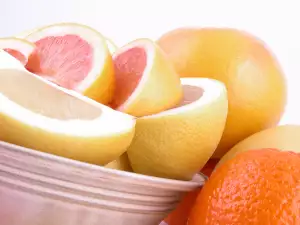
Composition of Citrus
Citrus fruits contain high amounts of vitamin C, vitamin group B and vitamin P. They also contain sugars, organic acids and essential oils that give them an attractive scent. Lemon and lime are close relatives who have a high content of vitamin C. In lime, it is more prominent than lemon. Lemons are rich in nutrients, containing minerals, vitamins A, B, B2, P, C and phytoncides.
Lime contains iron, phosphorus, potassium, calcium, magnesium and essential oils, pectic substances and vitamin P. The rind of lemons, and other citrus fruits, is rich in essential oils. Tangerines contain 6 to 8% sugar, 0.6 to 1% acid and oranges contain vitamin C vitamins A, B2, B6 and C. Their content also includes sugars, water, carbohydrates, acids, nitrogenous substances, essential oils, ash and fiber.
Types of Citrus fruits
1. grapefruit
- Yellow Grapefruit (Citrus maxima) - juicy, very bitter;
-Persimmon Grapefruit (Citrus xparadisi) - hybrid of grapefruit and orange (Citrus sinensis) and unlike other relatives, they are arranged in fruit clusters. It needs a hot summer and a lot of light, even in winter.
- Pink Grapefruit - sweeter, nicer, but more expensive than yellow.
The name of the grapefruit is actually an honest mistake. Centuries ago, English botanist wrongly classified as a variety of grapes and although after a while it became clear that this fruit is citrus, it’s name has been imposed so that it is impossible and unnecessary to change. For the first time. Europeans discovered grapefruit on the island of Barbados.
Their sour taste is due to the high concentration of fruit acids.
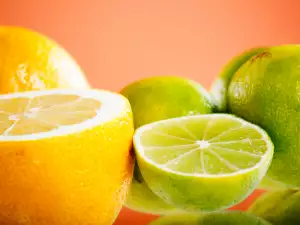
2. Lemons - the more yellow the skin is, the sweeter the lemon.
- Sour lemon (Citrus aurantiifolia) – sharp - oval shaped, small in comparison with lemon leaves and very small, pear-shaped, yellow fruits.
- Miniature Lemon Citrus (aurantiifolia x Fortunella matgarita) - cross that gives tiny yellow lemons that grow low.
- Lemon Citrus Tree - This species is distinguished by its exceptional growth, even in a large pot.
- Lime (itrus limetta) - branches are studded and the fruits are almost round.
- Citronella – looks like a lemon, it looks like a very long lime, which reaches 40 cm in length. It is sour-sweet flavor comes with a slight bitterness. The skin is most used, which is made into jams, or added to dishes.
3. Mandarins - very sweet and juicy, in most cases, there are many seeds.
4. Oranges (Citrus sinensis)
- Sweet oranges - they have different heights depending on the variety. The most famous are the "Sangvina" and "Moro" types. Other varieties are - Valencia, Navel and Jaffa - Jaffa;
- bitter orange (Citrus aurantium) - commonly used for making jam or marmalade and serves as a flavor in liqueurs, such as Grand Marnier and Cointreau;
- Small orange - hybrid species that are smaller in size, more aromatic and have red shades;
- Thin skinned oranges – great for making juice and also very fleshy;
- Thick skinned oranges - peel easily, but have less juice than their thin skinned brethren.
5. Limes, lime - very aromatic. A ripe fruit that is sweet, but their skin is used for decoration. The most common type is the Persian lime, also known as the "Florida" variety (Citrus × latifolia), which has a large fruit, thin skin and almost no seeds. The market often offers a variety of small, yellowish limes (Citrus aurantifolia). Other types of lime are mandarin lime (Citrus limonia), Citrus hystrix, several Australian limes, Spanish lime (Melicoccus bijugatus), wild lime (Adelia ricinella), sweet lime (Citrus limetta), Palestinian sweet lime (Citrus limettioides), and musk lime (X Citrofortunella mitis).
6. Pomelo - this is the largest citrus fruit, a grapefruit relative. It has a yellow green skin with a dry inside. Very tasty, it is a non- bitter grapefruit with many useful properties.
- There are five varieties of pomelo: Khao horn, with a yellow and bright green color, sweet inside; Khao namphung - pear-shaped, yellow green shell, the inside of the fruit is light and sweet, Khao paen has flattened, oval, yellow, green skin as the interior of this variety is bright and swept, as well as slightly acidic; Khao phuang has a pear-shaped skin and greenish yellow and the taste is sour sweet, the color of the interior is yellowish white; Thongdi has rounded, dark green skin and the fruit is pink and pretty sweet.
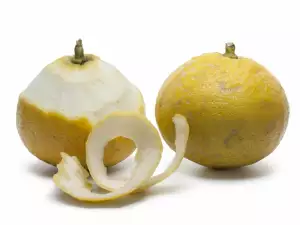
7. Bergamot - it is obtained from the cross of citron with other citrus fruits. The fruit is round or pear-shaped. Bergamot is grown for essential oils extracted from it’s flowers, fruits, leaves and bark.
Selecting and storing citrus
Citrus fruits are generally durable enough to be stored properly. Lemon may lie in the fridge a few months and Lime lasts no more than two weeks. The rule for selection of fruits, especially lemon and lime is that - the fruit must be brilliant. For all your citrus purchases, the rule that they should be juicy and heavy applies. Do not buy light tropical fruits. They need to look good for a long time and remain stored for weeks, citrus fruits are treated with fungicides. Some make diluted solutions, in which the fruits are immersed. The other is a liquid wax to clog pores, so the bacteria do not enter. However, these substances are carcinogenic and therefore - dangerous for humans.
Citrus fruits in cooking
Lemon juice is added to a dish quite often. It gives a nice taste to fish meals and snacks with chicken, pork, etc. Lemon and lime can be added early in the process of cooking, or the middle, even the end. It is an important component of most alcoholic cocktails. It has a slightly bitter taste, which makes it ideal for Mojito or Margarita. The juice is drained before preparing cocktails, because if you wait long, the essential oils it contains will disappear.
Lime is an essential ingredient in the famous guacamole sauce. Thai food lovers know the sour-spicy taste of tom yam soup that is boiled with a special sort of lime. This fruit contains very little juice, so in meals the skin, leaves, and others are also used. In the Arabian Peninsula, they boil salt water with limes, and then they are dried in the sun - so be prepared especially for the Arab spice Lumina, which is added to dishes like beans and rice, giving them a subtle citrus flavor. The peel of citrus fruit can be candied, also being an excellent and specific additive to sauces, soups, cakes, creams, etc.
Benefits of Citrus
Regular consumption of citrus allows many benefits to human health. All freshly squeezed juices from citrus fruits are good helpers for your health, if you drink immediately after pumping. Citrus has extensive external applications, such as cleaning, toning and detoxifying skin. If you have migraines, drop a few drops of lemon juice rub into your temples and you will be done.

Regular consumption ofcitrus fruits is good for the eyes. Eating tropical fruits man prevents the development of macular atrophy - one of the most important causes of mid- blindness, according to researchers at City Hospital in Boston, USA. Citrus fruits are ideal for the treatment and prevention of vitamin deficiency, gastrointestinal diseases, atherosclerosis, scurvy, angina and hypertension.
A good start is a glass of warm water with lemon juice that increases your immunity and fights toxins. It is possible to extract more juice from a lemon, roll it on the table a few seconds or immerse for 10 seconds in a bowl of hot water. Lime and its valuable ingredients are very valuable to the health of blood vessels. Scientists say there is no plant that can compete with on its lemon antibacterial properties.
As a rich source of vitamin C, lemon is very effective against colds and flues. Drink lemon juice with honey and gargle with a mixture of lemon juice, a pinch of salt and warm water. Lemons contain lots of potassium and ascorbic acid, which strengthen and make the walls of small blood vessels flexible. They actively participate in the redox processes. That's why lemons are often used in formulations for the treatment of MS.
A decoction of the dried peels of mandarins softens coughs and has expectorant effect in bronchitis and tracheitis. It helps reduce the level of sugar in the blood. Prepare a decoction of the skin of three mandarins and boil for 10 minutes in 1 liter of water. It is filtered and taken every day, it must be stored in the refrigerator. Eating mandarins even helps to lower excess weight and restore damaged liver cells.
Oranges are a means to stop uterine bleeding - prevention of premature birth, termination of pregnancy, or excessive menstrual bleeding. It is advisable to use orange juice no earlier than 20-30 minutes after eating to strengthen the stomach. Grapefruit is particularly useful for lowering blood pressure and restoring strength for physical activity.
Citrus fruits are a powerful tool for beautify and insect bite itches will go away if, you rub the area with lemon juice. Lemon juice cleans the skin from freckles and pigmentation and visibly rejuvenates you. It is, however vital, that for one hour after the procedure, you do not go into the sun. Ascorbic acid increases resistibility of the organism to infection, helps the production of collagen and maintains skin elasticity. Mandarins are also useful in skin diseases – their fresh juice kills some fungi.
To heal stricken skin, rub citrus fruit juice repeatedly or apply mandarin peels. Grapefruit and other citrus fruits are very useful for digestion. Used as a mild diuretic, this helps boost your immune system and tone the body. It is an excellent tool for weight loss, the most valuable part of the fruit in this regard is the skin between the internal parts.

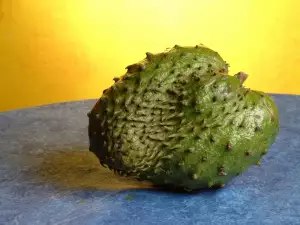

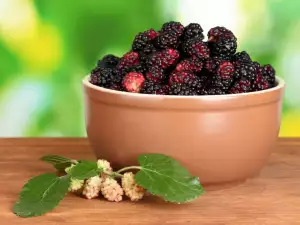

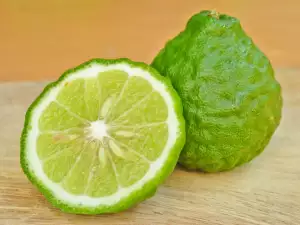




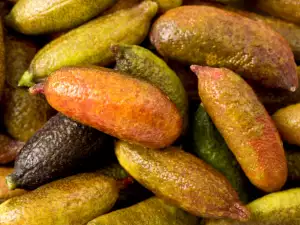



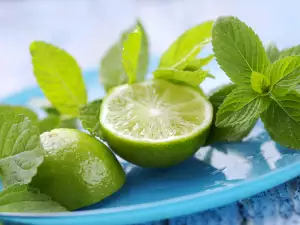




Comments